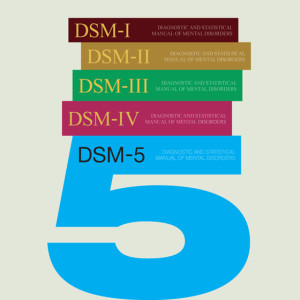 I was recently contacted by a single mom asking for therapy for her 8-year-old son. She describes him having problems with anxiety and concentration, especially in the day or two after weekend visits with his dad. They have had joint custody since their divorce two years ago, but mom says dad is skeptical of therapy so she wants to bring her son in for an initial appointment without talking to dad. I usually like to meet with both parents at the beginning of child therapy, so I’m reluctant to make an exception in this case. What should I consider in responding to mom’s request?
I was recently contacted by a single mom asking for therapy for her 8-year-old son. She describes him having problems with anxiety and concentration, especially in the day or two after weekend visits with his dad. They have had joint custody since their divorce two years ago, but mom says dad is skeptical of therapy so she wants to bring her son in for an initial appointment without talking to dad. I usually like to meet with both parents at the beginning of child therapy, so I’m reluctant to make an exception in this case. What should I consider in responding to mom’s request?
Working with families involved with separation and divorce is complex, and you are wise to be thoughtful about how you approach the beginning of therapy in this case. Chapter 7 of my book includes more detail about this topic, as well as other specialized areas of assessment. I’ll review the legal and clinical implications of working with one or both parents in child therapy and discuss some of the factors that influence parents to request therapy for their children following divorce.
First, it’s important to consider the legal issues regarding parental consent for a child’s therapy. If the parents share joint custody, the consent of only one is required; however, if the other parent objects at any point you will be required to end treatment. It would be detrimental to the child to end therapy abruptly after a few weeks or months, and that is a risk inherent in beginning therapy without the consent of both parents. At minimum, I would recommend asking the mother to provide a copy of the custody decree so you have confirmation of her report.
Although you might be legally permitted to begin therapy with only one parent’s consent, there are many clinical reasons to engage both parents in the therapy. Your practice of meeting with both parents indicates you are aware of the importance of hearing both parents’ perspective on the child, the importance to the child of knowing that you maintain a relationship with both parents as he does, and the benefit to the child of providing consultation to both parents about their influence on him. Part of the initial phase of any therapeutic relationship is establishing the frame, and making an exception to your usual practice would undermine the clarity of the frame and your role as a professional.
It is often helpful to reflect on some of the factors that may influence this mother to seek therapy for her son. In addition to concern about his emotional wellbeing, she probably has other motivations, both conscious and unconscious. She may wish to attribute any difficulty in her son’s emotions and behavior to his father in order to reduce her feelings of guilt and shame; she may be looking for an advocate in a legal proceeding regarding financial support or custody; or she may feel threatened by her son’s relationship with his father. It is wise to assume that this mother’s request is more complex than it may initially appear and to remember that your role is to serve the child’s needs which overlap with but are not identical to those of his mother.
You may find it helpful to develop a standard way of describing your reasons for involving both parents in therapy, especially after divorce. An example that would fit this case is “I understand your son’s dad has some reservations about therapy, but I have found it essential to talk with both parents in order to make sure I have the full picture. I won’t be effective in helping your son if I’m not in touch with both of you. How could we work that out?”. It is possible that the mother will decide to look for another clinician, and you may feel pulled by your concern for the son. However, maintaining a clear therapeutic frame is especially important in cases involving divorce.
Most clinicians find it challenging to work with families of divorce, so consultation with an experienced clinician will be helpful. You may also find ongoing peer consultation to be a resource for navigating the emotionally charged issues that are part of this work. If you’re interested in reading more about this and related issues, click here to order from Amazon or here to order from Routledge.









